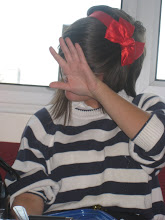Today I took a trip to Leeds City Museum, still with an unsure mind into what I wanted to have as my subject for this project or what 'collection' I wanted to investigate. It was nice to walk round the museum with an open mind. One thing I did key into a lot, was how things were presented within cabinets.



The case below is kind of what I want to present for my wall piece, strangely it had butterflies in it aswell - this was my subject matter I had as an idea.

As I'm thinking of putting a museum draw/case together as my wall piece, I looked closely at the way things were laid out and put together throughout the museum. As you can see below, numbers (either set on resin/plastic or simply on the wall) are placed or put next to the item of explanation. This is so it has a reference number for it's audience to then easily read the information to go with it.



I went to the museum with the idea of 'pattern' and 'parts' floating about in my mind, and so as I wondered round I became increasingly fascinated and interested in the intricate pattern on butterflies and birds, but also bone structures and the collection of parts that were put together in order to make the actual 'item'/'object' of collection (The Taxidermy).

Below is actually 'parts' put together to re-enact the Dodo. The Dodo is related to the pigeon, they became extinct at the end of the 17th century. There are no complete Dodo remains anywhere in the world.
 The idea of parts is shown through all of these bone structures, even the skull, as that is bit of skull fused together. Collectively the collection of 'parts' make up the item/object of collection, which is what I want to communicate through my book and project.
The idea of parts is shown through all of these bone structures, even the skull, as that is bit of skull fused together. Collectively the collection of 'parts' make up the item/object of collection, which is what I want to communicate through my book and project. This fish was amazing, absolutely huge and too look at, encompassed pattern through the formation of it bones.
This fish was amazing, absolutely huge and too look at, encompassed pattern through the formation of it bones.
Other COLLECTIONS within the Museum.
'Collecting and Accumulating...Many of us share a powerful urge to collect things. Often collections are handed on and added to by future generations'.
'Collecting to escape...The dirt and ugliness of cities in the 1800s' offended many middle-class people. One way to escape was to create a make-believe world, filled with works of art from happier and more colourful times in history'.
Sacred Books, were something we spoke about in a lecture and how these are items of collections but also a book with meaning attached with out even reading it.

Recent collections...Collecting today: This case at the museum is for any modern day Leeds collectors to get in touch and display their own collection.

Another interesting collection within the museum is the idea of type through time/the development of writing and how the written word has progressed. It stated that the earliest writing, was picture-writing or pictograms where a symbol was used to represent objects and actions. Later writing developed to represent spoken sounds and was used to record stories and ideas. Writing was first used by the Sumerians of Mesopotamia, over 5,000 years ago. It was mainly used to record basic information about trade, such as lists of goods.


Along with the Historic collections the museum holds, this was a collection put together of The Leeds Savage Club, a social club of artists, writers, musicians and journalists which was formed in 1898 and disbanded in 1912. The meetings were informal, with a north-American 'Indian' theme. Many of the leading Leeds artists of the time belonged to the club. What survives is the artists work, the ritual objects used at meetings and a large collection of ephemera connected with the club.
Taxidermy.
Along with the collection of animals, was a sign, saying that many of the animals on display were hunting trophies. Also explaining that in todays' society we respect the animals not the hunter and we do not kill animals for museum displays.













No comments:
Post a Comment